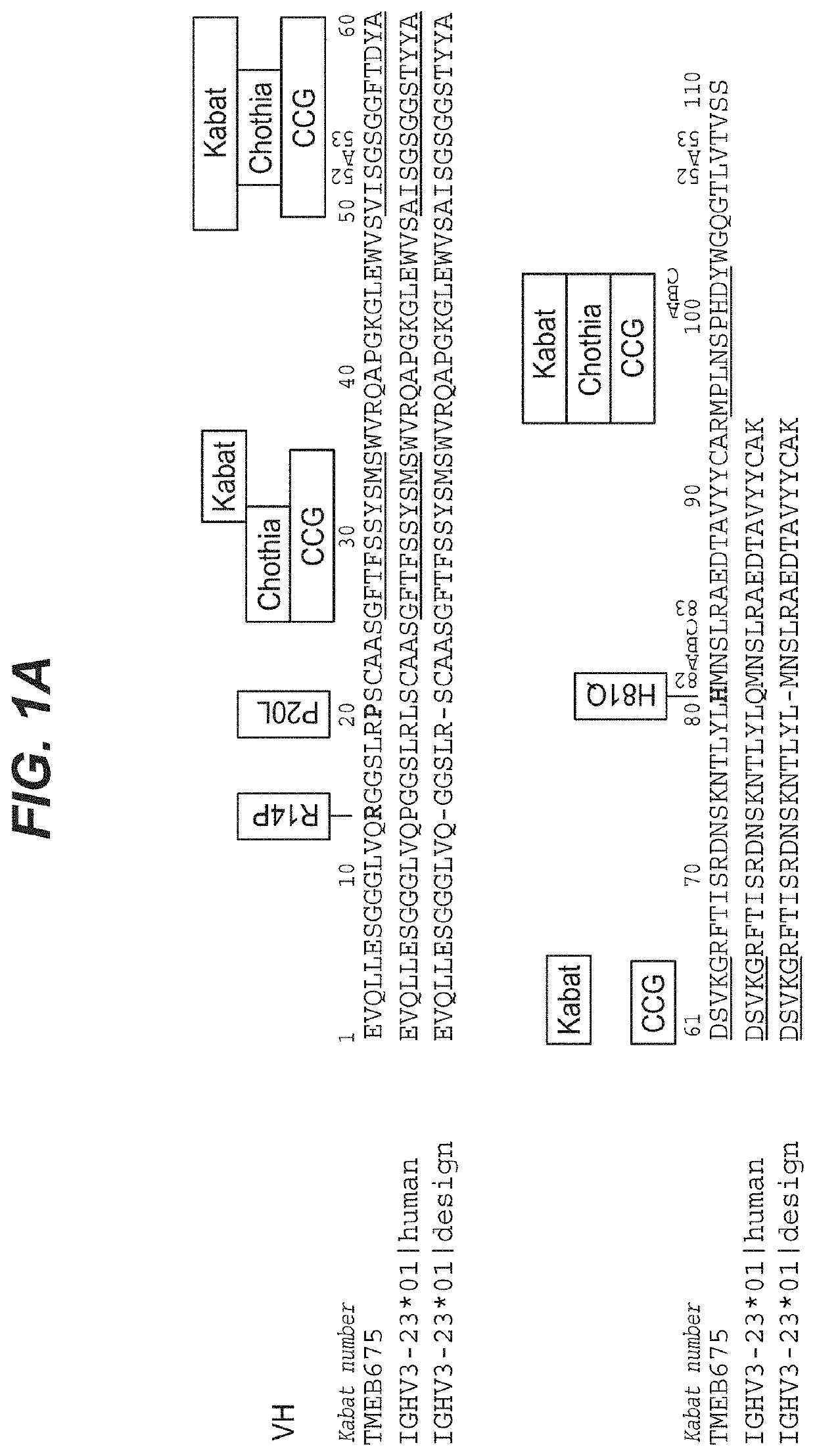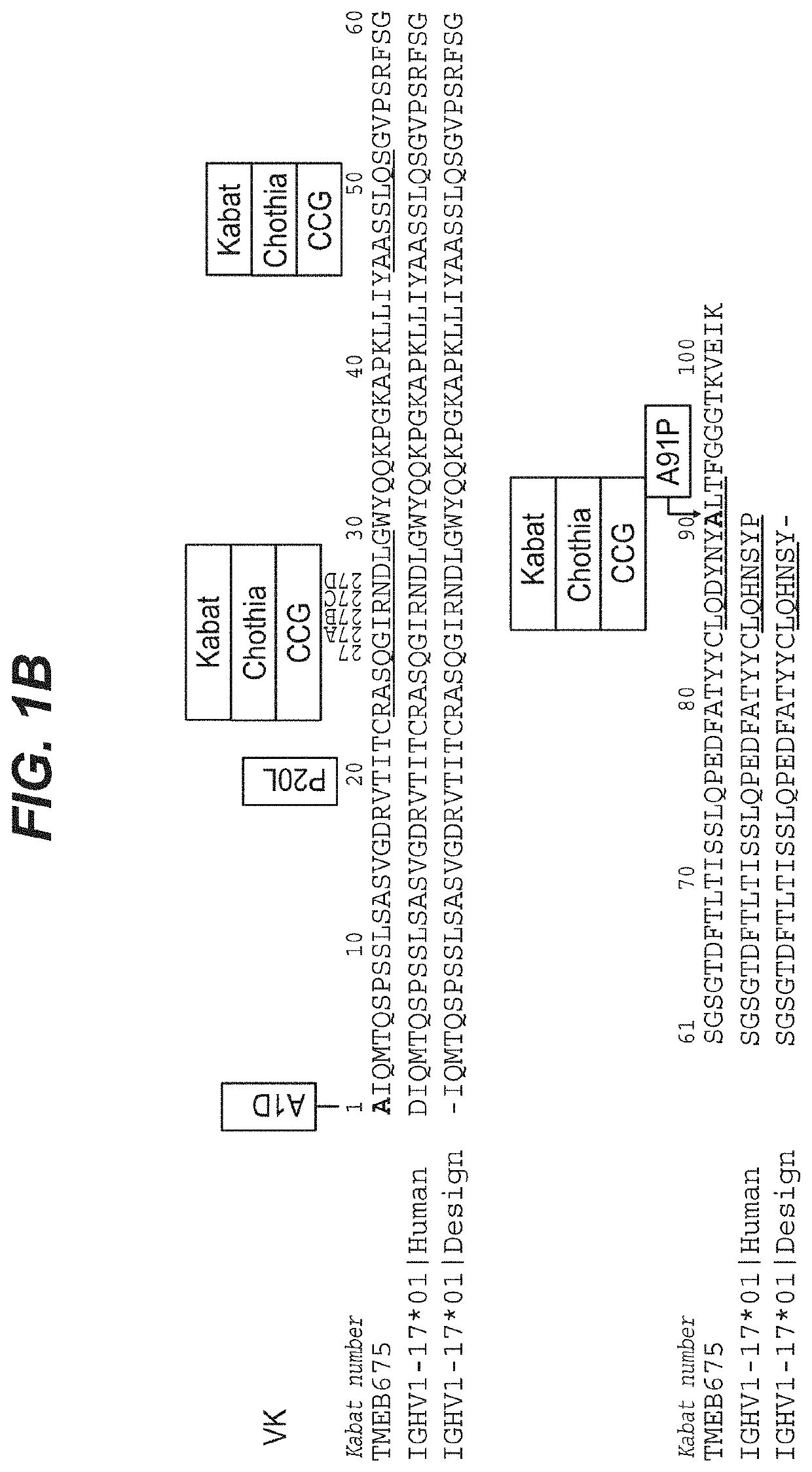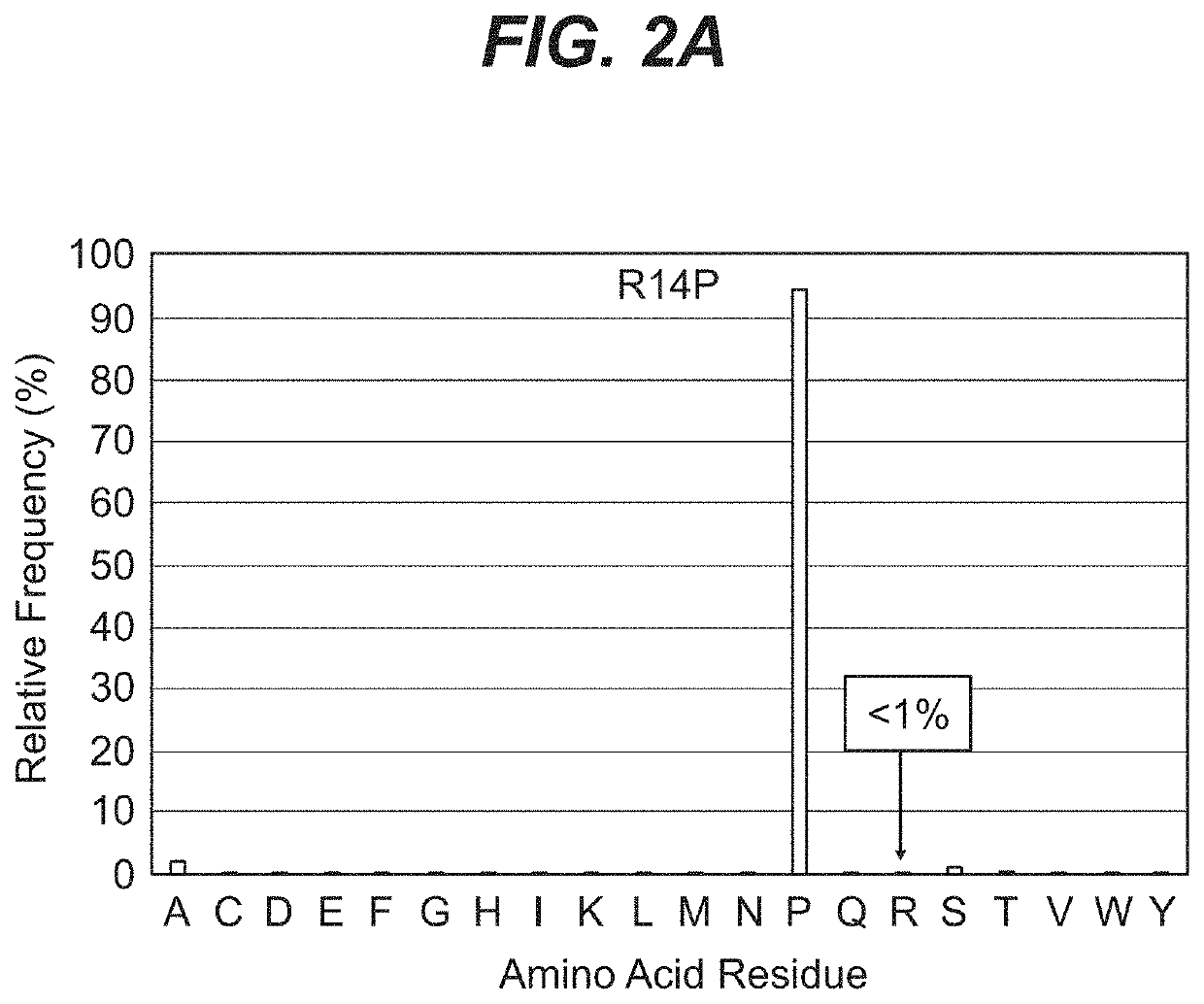Methods for producing biotherapeutics with increased stability by sequence optimization
a monoclonal antibody and sequence optimization technology, applied in the field of sequence optimization of monoclonal antibody, can solve the problems of low frequency residues, affecting the stability and immunogenicity of biotherapeutics, and the elimination of antibody stability, so as to reduce the risk of immunogenicity and improve biophysical properties
- Summary
- Abstract
- Description
- Claims
- Application Information
AI Technical Summary
Benefits of technology
Problems solved by technology
Method used
Image
Examples
example 1
[0119]The example below describes the optimization of an anti-prostate target antibody, TMEB675, through germlining of SHM sites identified in the framework of the antibody. While the antibody met the functional criteria characteristic of a high affinity antibody, it showed poor intrinsic properties. Re-engineering of TMEB675 generated a panel of variants from which TMEB762 was selected based both on its function and favorable biophysical properties.
Discovery, Engineering and Germline Optimization
[0120]The monoclonal antibody (TMEB675) was discovered by immunizing OmniRats with the recombinant human TMEFF2 in the OmniRat® transgenic platform. OmniRat® is a therapeutic human antibody platform producing highly diversified, fully human antibody repertoires. The OmniRat® contains a chimeric human / rat IgH locus (comprising 22 human VHs, all human D and JH segments in natural configuration linked to the rat CH locus) together with fully human IgL loci (12 Vκs linked to Jκ-Cκ and 16 Vλs li...
example 2
[0146]The workflow described in Example 1 was applied to optimize other antibodies of different structure and function. Example 2 describes the optimization of an anti-prostate target antibody, PSMW56, through germlining of SHM sites identified in the framework of the antibody.
Discovery, Engineering and Germline Optimization
[0147]The monoclonal antibodies (PSMW56) were discovered by immunizing OmniRat with the recombinant human PSMA proteins in the OmniRat® transgenic platform. Following a 89-day immunization regimen, lymph nodes from the rats were harvested and used to generate hybridomas. Hybridoma supernatants were screened for binding to recombinant antigens by ELISA. Based on the screening results, several hybridoma clones were sequenced, expressed and characterized for functionality. Variant PSMW56 showed desirable recombinant protein affinity (Table 14) and was selected for further studies. While the antibody met the functional criteria characteristics of a high affinity anti...
example 3
[0150]To further demonstrate that the workflow of FIG. 11 is broadly applicable to other antibodies, the workflow was applied to optimize the anti-prostate cancer antibody, DL3B355. The example below describes the optimization of DL3B355, through germlining of SHM sites identified in the framework of the antibody.
Discovery, Engineering and Germline Optimization
[0151]Anti-DLL3 monoclonal antibodies were discovered by immunizing AlivamAb mice, a transgenic fully human antibody platforms that produces a diverse repertoire of antibodies with human idiotypes with the recombinant human DLL3. Hybridoma supernatants were screened for binding to recombinant antigens by ELISA.
[0152]Based on the screening results, several hybridoma clones were sequenced, expressed and characterized for functionality. DL3B355 showed desirable recombinant protein affinity (Table 16) and was selected for further studies.
TABLE 16Parameters from Affinity measurement of equilibriumconstant KD (M) were determined by ...
PUM
| Property | Measurement | Unit |
|---|---|---|
| Tm | aaaaa | aaaaa |
| time | aaaaa | aaaaa |
| temperatures | aaaaa | aaaaa |
Abstract
Description
Claims
Application Information
 Login to View More
Login to View More - R&D
- Intellectual Property
- Life Sciences
- Materials
- Tech Scout
- Unparalleled Data Quality
- Higher Quality Content
- 60% Fewer Hallucinations
Browse by: Latest US Patents, China's latest patents, Technical Efficacy Thesaurus, Application Domain, Technology Topic, Popular Technical Reports.
© 2025 PatSnap. All rights reserved.Legal|Privacy policy|Modern Slavery Act Transparency Statement|Sitemap|About US| Contact US: help@patsnap.com



